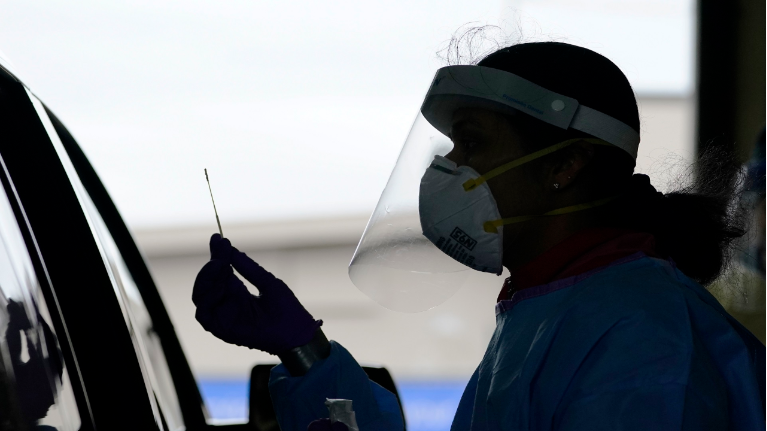CLEVELAND — More than 35,000 Ohioans are currently infected with COVID-19—the highest estimate since July and an increase of more than 27,500 since last week, according to the Ohio Department of Health.
Ohio saw record-breaking numbers when it comes to daily cases last week, and the total now surpasses 200,200 since the pandemic began. Although more than 158,000 have recovered, the state has recorded 5,239 deaths as of Tuesday. More than 140 of them occurred last week.
On Thursday, DeWine announced three counties are heading for Purple Alert Level 4—the worst label in the state's COVID-19 tracking system, indicating the highest risk of spread. The counties are Clark, Hamilton and Cuyahoga. This is the first time Clark has been added to the watch list. It's the second time for Cuyahoga and Hamilton. The levels are updated every Thursday.
Each county's level is dependent on the state's seven indicators: Cases per capita, consistent case increase, proportion of cases not in a congregate spread, consistent increase in emergency visits, consistent increase in outpatient visits and sustained increase in new hospital admissions.
Cuyahoga County
Between Oct. 16 and Oct 23, the Cuyahoga County Board of Health reported more than 660 cases. In total, they've documented 13,771 cases—one of the most in the state next to Franklin and Hamilton counties. Deaths have also increased to 593 total.
More than 20% of the cases are within the 21 to 29 age range.
DeWine also noted in last week's press conference the the county exceeds the Centers for Disease Control and Prevention’s threshold for high incidence, seeing a consistent increase in new cases, hospital admissions and outpatient cases. DeWine said if the county receives markings on six or seven indicators on the state's system, it will move into Level 4.
Clark County
Clark County has seen its deadliest month since August. Last week, the county recorded nearly 200 new cases and 33 deaths as of Oct. 23, which is double than what was documented in August.
The Clark County Board of Health reports many of the cases are being traced back to long-term care facilities.
It was the only county to hit six indicators on the seven-indicator system last week, according to the Clark County Board of Health. The only one it didn't hit was ICU bed capacity.
Overall, it's had 2,530 cases and 79 total deaths as of Friday.
Hamilton County
Hamilton County had a rate of 234 new cases per 100,000 residents last week and hit five indicators on the state's list. On Sunday alone, 241 new cases were reported.
It's currently the county with the third-most cases behind Cuyahoga County with more than 17,000.
What happens if counties reach Level 4?
The state hasn't given clear instructions on what would happen if a county enters Level 4. DeWine did say there are no mandates if a county turns purple, and there won't be a county-wide shutdown.
Instead, it'll be much like the messages Ohio heard throughout the last few months: Stay home if you can, only travel when necessary and limit your interactions with others as much as possible.
While a mask mandate is still in effect statewide, many restrictions have been loosened on businesses since the start of the pandemic. It's possible that could soon change with cases rising, DeWine warned last week.
Counties in the red won't be updated on whether they've reached Level 4 status until Thursday.
What about the other counties?
As of Thursday, 38 counties are currently under Red Alert Level 3, which means more than 70% of Ohioans are living in areas that have been indicated as a high risk for COVID-19 spread.
Forty-six counties are under Orange Alert Level 2, which indicates an increased spread but not as high as Red Alert counties.
Only four counties are under Yellow Alert Level 1, which means the virus is around, but isn't spreading as strongly. Those counties are Noble, Monroe, Harrison and Hocking.



